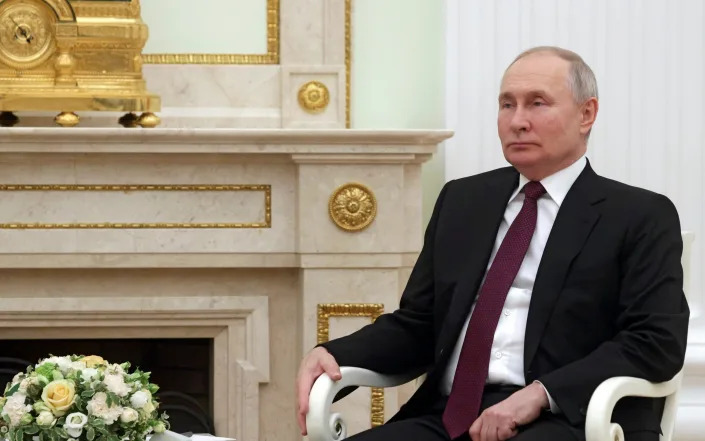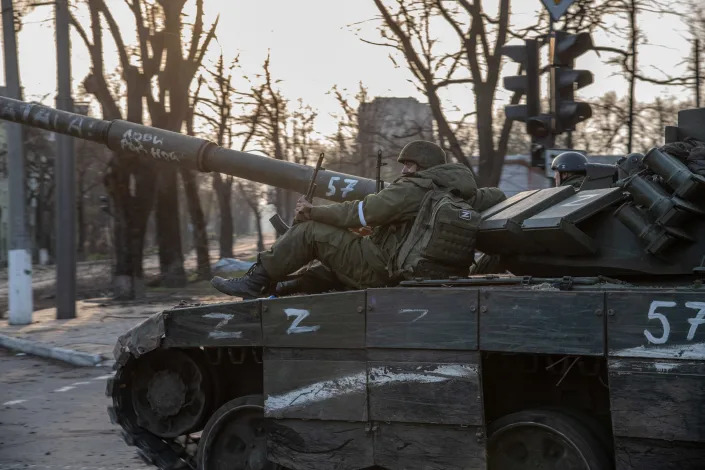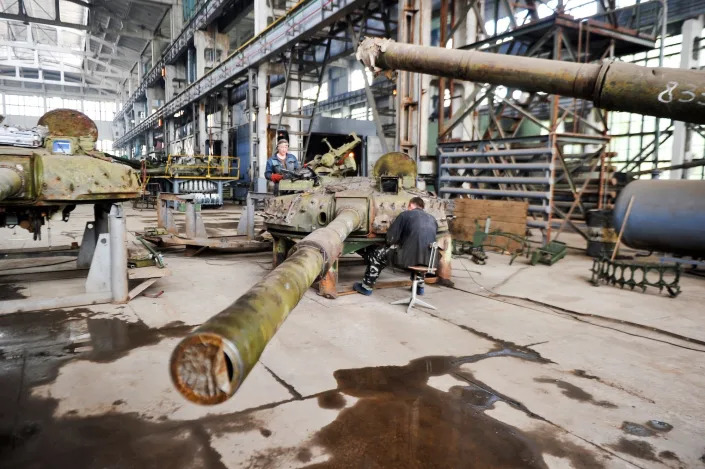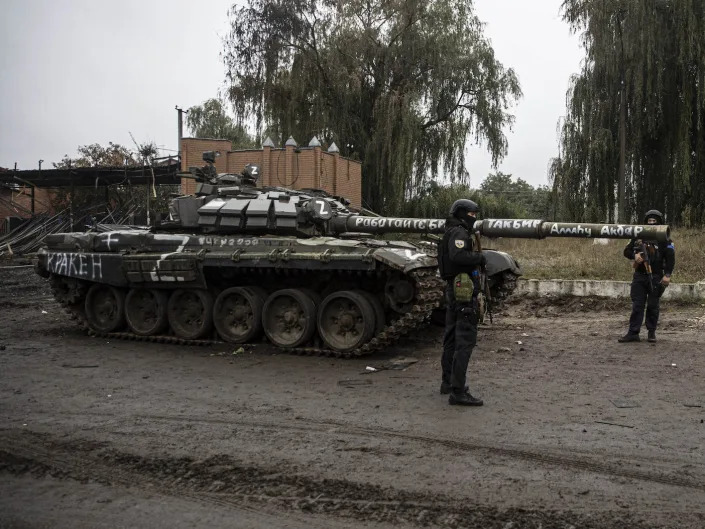Today
Man diagnosed with stage 4 colon cancer at 29 shares symptoms: ‘It hit me pretty hard’
Meghan Holohan – March 21, 2023
When Brendan Menapace ate, he felt “terrible” and wanted to nap. He noticed blood in his stool and visited his doctor.

“I just turned 29, so I didn’t really think colon cancer,” the now 30-year-old tells TODAY.com. “All the symptoms really got worse, so I knew something was wrong, and (I needed) to find an answer.” After testing, Menapace learned he had stage 4 colorectal cancer.
“It was definitely surprising,” he says. “It hit me pretty hard.”
“Textbook” symptoms
In the summer of 2021, Menapace experienced pelvic pain, constipation, bloating and fatigue.
“I would eat and then pretty much immediately would want to lay down,” he says. “I felt terrible.”
He also noticed blood in his stool and couldn’t sit for more than an hour and a half, which he noticed while driving to vacation. After eating, he would feel so awful that he felt drowsy.
“In retrospect, it was pretty much the textbook things they say to look out for,” he says.
He visited a doctor who sent him for a colonoscopy in early October 2021. As soon as Menapace woke, he knew it was bad.
“They told me as I was waking up,” he says. “There was a plan pretty much immediately.”
Two weeks after his test, he started chemotherapy from the end of October until January. Then he underwent 20 radiation sessions to his pelvis until March.
“From there, basically things had shrunk enough that surgery was viable,” he says. “But chemo and radiation take a toll on your body, so I was in pretty rough shape.”
In May, doctors surgically removed his rectum, part of his colon and lymph nodes, and he received a temporary ileostomy bag as his colon recovered. In July, doctors reversed his ileostomy, and by October, a PET scan showed no evidence of disease.
“Until you hit that five-year mark, you’re not considered cured or cancer-free,” Menapace says. “Because of the way it spread, it wasn’t as simple as just cutting out the tumor or declaring me cancer-free.”

Colon cancer in young people
A recently published report from the American Cancer Society shows that the rates of colon cancer in young people are increasing. The reason for the increase remains a mystery.
“Rates were globally going down in older patients with screening, and we also thought this was one of those cancers that are cancers of aging, which is why you didn’t screen somebody until they were 50,” Dr. Ursina Teitelbaum, a medical oncologist at Penn Medicine, tells TODAY.com. “Now we’re seeing this trend towards younger and also more left-sided — the descending colon, sigmoid colon and rectum particularly — and we don’t really know why.”
Teitelbaum says older patients tend to have more cancer on the right side, which is the ascending colon. It’s unclear why younger patients see more left-sided problems. But it leads to certain symptoms.
“If it’s on the left side or in the rectum, you may have pain with bowel movements or abdominal pain in general. You might have a change in what we see in the caliber of your stool. Instead of a normal-formed stool, you might have a skinny stool,” she says. “This is a funny point of conversation because people get uncomfortable talking about their bowel movements. But it’s actually really important to pay attention.”
Other symptoms include:
- Weight loss
- Fatigue
- Blood in stool
- Shortness of breath
- Pelvic pain
“I have one younger patient who was a very competitive biker who noticed instead of 100 miles a week, he could only bike 50 miles a week,” she says. “It turned out he had rectal cancer and (was) slowly losing blood, and that was the reason.”

Some people feel embarrassed to talk about their bowel movements, even with their doctors, meaning they don’t get help as quickly as possible. Other barriers can make it tough for younger people to get a colonoscopy, too, further delaying treatment.
“A lot of younger patients, people in their 30s, 40s, might not even have a primary care physician. They don’t have any medical problems. They are perfectly healthy,” Teitelbaum explains. “There are other things that are difficult with (colonoscopies). You have to find someone to give you a ride. … You have to take a day off work. You have to have insurance. You have to be able to afford a prep. So, there are a lot of barriers.”
Current screening recommendations for colon cancer are, starting at 45, people need to undergo a colonoscopy every 10 years, which recently changed from 50. Teitelbaum believes that both patients and primary care physicians need to be aware that colorectal cancer can occur to younger people.
“The key for now is education and that’s not just educating people that are younger, but educating their health care providers that if someone comes in with blood in their stool or some of the symptoms, they might need to move screening for colorectal cancer higher on the differential,” she says. “Part of the problems is that hemorrhoids (are) really a common condition.”
Finding colon cancer earlier often means surgery alone can remove it. As it metastisizes, it becomes harder to treated.
“Once it spreads beyond to the liver, the chance of it being curable is much lower,” she says. “That said, I am happy to say most of the time, even when it’s not curable, it’s treatable.”
With colonoscopies, doctors can detect precancerous polyps and remove them before they become cancer.
“You can intervene and remove a polyp before it becomes cancerous,” she says. “That said, not every polyp will become cancerous. So, it’s a balancing act.”
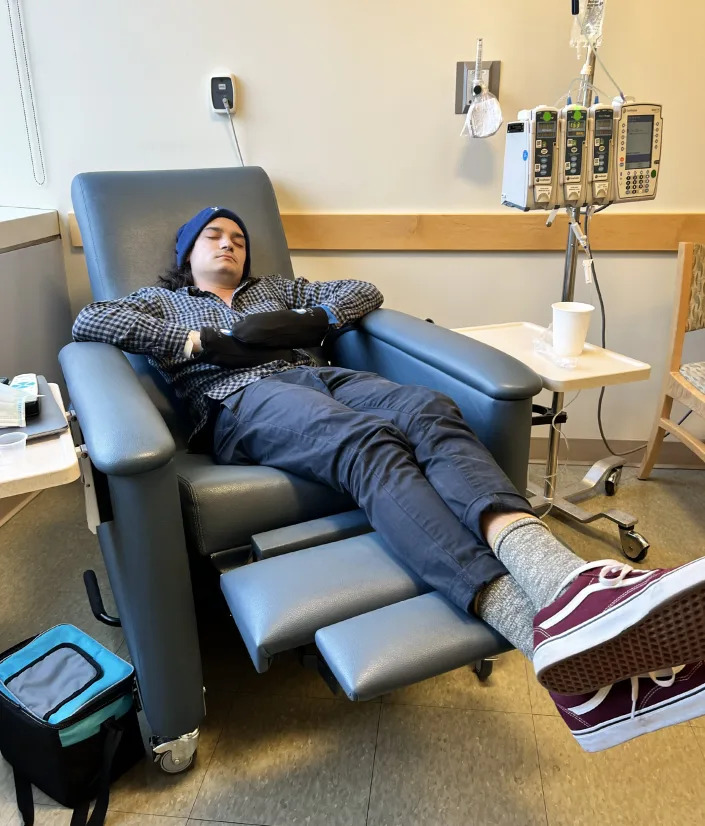
‘Huge learning curve’
While Menapace received chemotherapy, he experienced neuropathy, numbness and tingling from nerve damage. As soon as treatment stopped, these symptoms went away. He has had to adjust to not having a rectum.
“It has been a huge learning curve and just the trauma to my colon and lower digestive system — things are never going to be the same,” he says. “There’s a new normal that I’m working toward and that takes a lot of work in its own right. I have to be careful eating.”
He returned to work and exercise, resuming as much of a “normal life” as he can.
“When I leave the house, I have to know where a bathroom is. … It’s something in the back of my head, and I have to think about something that I never had to before,” he says. “It’s hard to fathom the idea of something being different forever.”
With the help of his partner, friends, family and therapy, Menapace is trying to grapple with the changes he faces due to cancer. He encourages others to talk about their symptoms with their doctors, no matter how strange it might feel.
“You’re trained not to talk about your poop. You’re trained not to talk about your butt. This is not (what you talk about) in polite society. At first, I would rely on euphemisms and be kind of fake and make jokes,” he says. “If you’re not detailed on what you’re going through, you’re not going to paint the right picture for your care team. You’re not going to get the right care.”




